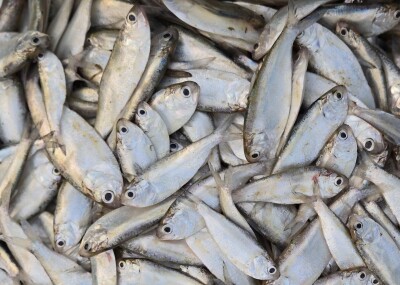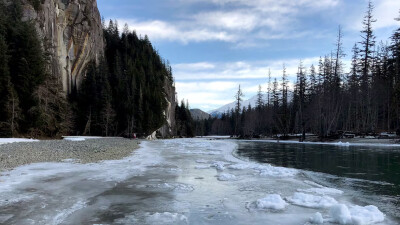Gulf/South Atlantic Snapper
Low recruitment, management politics of rec overfishing worry Florida fleets
Looking toward 2014, the commercial snapper fisheries and the market that supports them generally look good. But the politics that determine management and how they could affect the market in the near future worries fishermen.
In most years, Florida fishermen land more red snapper than do harvesters in any other state, most of the vermilion snapper and almost 100 percent of the yellowtail. In 2012, Florida commercial landings for all three species combined were worth $17.2 million dollars ex-vessel.
Through mid-August this year, the ex-vessel value of all three totaled $8.9 million, according to preliminary Florida Fish and Wildlife Research Institute numbers, versus $11.68 million through the end of August in 2012. However, preliminary numbers are frequently revised upward, and the fall and winter months are usually good ones for red snapper and vermilion.
Fishermen have, however, been reporting significantly reduced vermilion landings for a couple of seasons. Landings have dropped from 2.53 million pounds in 2011 to 1.79 million last year and 650,096 pounds through mid-August this year. Harvesters remain concerned that the 2010 BP Deepwater Horizon oil spill has harmed recruitment.
On the other side of the dock, as the economy continues to improve, so have average red snapper and vermilion snapper ex-vessel prices.
Red snapper prices increased from $3.52 per pound on landings of 1.53 million pounds in 2011 to $3.62 on landings of 1.70 million pounds in 2012 to $3.82 for the 941,177 pounds caught through mid-August this year.
Vermilion increased from $2.61 in 2011 to $2.77 in 2012 to $2.95 for landings of 650,096 pounds this year. Yellowtail increased from $2.85 on landings of 1.89 million pounds in 2011 to $2.90 for the 2.1 million pounds landed last year but has slipped to $2.82 on the 1.2 million pounds notched through Aug. 13.
The average catch per trip value has increased each of the past three years for red snapper, from $1,950 to $2,092 to $2,586 in 2013. In line with fishermen's observations, vermilion snapper catch value per trip has decreased each year as they have become harder to find, while yellowtail has remained relatively steady.
Commercial red snapper fishermen operate under an IFQ program and have stayed within their quotas every year since the program launched in January 2008. However, the recreational sector routinely exceeds its annual quota, frequently by a million pounds or more.
Theoretically, commercial and recreational fishermen are equally represented among appointed Gulf of Mexico Fishery Management Council voting members. But of the four commercial representatives, one is a local oil company manager and recreational fisherman, two are seafood dealers and one is a marine services company executive.
It's not the same thing as having a fisherman representative, says veteran red snapper harvester Wayne Werner, of Alachua, Fla. "We don't have any representative," Werner says.
The council proposes a three-pronged solution to solving the recreational overages. One, it would turn recreational management over to the states via Amendment 39 to the reef fish management plan. The council was to vote on the amendment at its October meeting.
Two, it's increasing the total allowable catch to 11 million pounds from 8.46 million pounds. And three, as proposed in Amendment 28, now in the scoping phase, 3 to 10 percent more of the total catch would be allocated to the recreational sector at the commercial sector's expense, with any future increases going primarily to the recreational sector.
Red snapper fisherman Donald Waters, of Pensacola, Fla., says the proposals are unfair. "They're not holding the recreational sector accountable," he says. "It's not only that they don't have good data; they don't want good data. There is no justification to reallocate the fish."
Fishermen worry that continued reallocation won't leave them with enough fish to meet market demand — or continue to make a living. — Hoyt Childers
Alaska and Pacific Dungeness
California institutes pot limits hoping to reduce early season glut, cut costs
California's new crab pot limit program was to debut as the West Coast Dungeness fleet eyed a Nov. 15 start. With the program came hope that markets wouldn't be awash in crab early in the season and that fishermen would see savings from owning and registering fewer pots.
The pace in the first few weeks generally runs hot and heavy as harvesters work to supply regional holiday demand that begins at Thanksgiving and doesn't taper off until right around the Super Bowl in early February.
But where once California harvesters could fish an unlimited number of pots, this year they'll use fewer. Under the new program, there are seven tiers of pot limits based on California landings; the maximum number of pots an individual can fish is 500.
"It's a good thing for the industry because everybody was buying more and more pots just to keep up," says Larry Collins, president of the San Francisco Crab Boat Owners Association. "It ended the arms race, and hopefully it will take some of the glut out of the front of the season."
How the new limits will affect the delivery pace and ex-vessel prices remains to be seen. Last season, the California fishery landed 24.2 million pounds worth $68.9 million, short of the 2011-12 record total of 31.6 million pounds worth $94.8 million.
"Until we throw the gear in the water, it's anybody's guess," Collins says.
Washington implemented pot limits in 1999, and Oregon followed in 2006. California's program stems from a 2010 bill the governor signed in 2011.
If fleet dynamics in California follow those seen in Washington and Oregon after those states implemented pot limits, fishermen can largely expect business as usual on the harvest side of the equation.
"Our analysis after limits were imposed showed that the vessels catching the most crab prior to pot limits were still catching the most crab after pot limits were implemented," says Dan Ayres, coastal shellfish lead biologist with the Washington Department of Fish and Wildlife, in Montesano. "Catch during the first weeks of the fishery opening still accounts for a large percentage of the entire season."
Angel Cincotta, a partner with Alioto-Lazio Fish Co, in San Francisco, says, "We try to keep our prices as low as possible for our customers, but we need to make sure the boats get a fair market, too. We think the pot limit will be a moot point because the market is driven by market conditions and the weather."
Fishing vessel owners will likely realize a reduction in expenses with owning and maintaining fewer pots. For starters, they won't have to buy more buoy tags to accompany the purchase of additional pots as seen under the old regime. Kelly Corbett, the commercial crab project leader with the Oregon Department of Fish and Wildlife's Marine Resources Program, says fishermen tell him a fish-ready pot can cost $175 to $300.
"Some license holders have told us that the pot limit has made their fishing operations more efficient," Ayres says.
Corbett notes that the total number of pots in the water during the seasons since the pot limit program has dropped from an estimated 155,000 to 112,000 in recent years. Yet ex-vessel revenues don't show signs of suffering.
Oregon Department of Fish and Wildlife preliminary data shows landings rose from 14.29 million pounds worth $42.3 million in 2011-12 to 17.84 million pounds worth $47.6 million last season. Washington harvesters improved on the 2011-12 catch of 8.62 million pounds worth $29.7 million, notching 13.78 million pounds worth $39 million last season, according to preliminary numbers. — Charlie Ess






